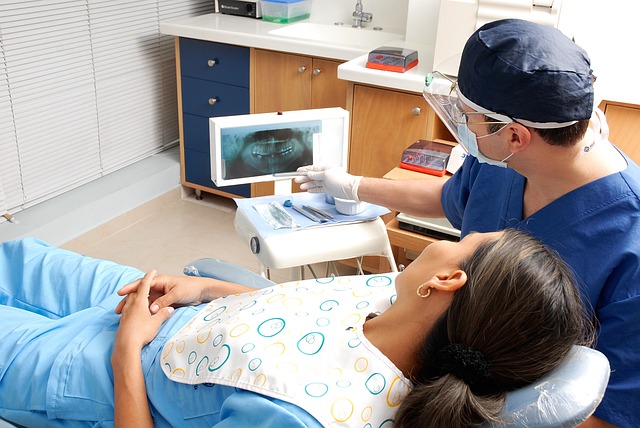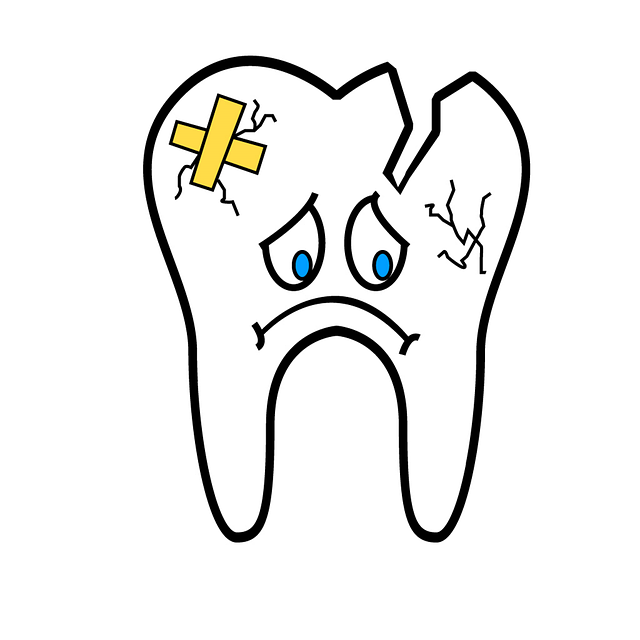Root canal treatments are essential for preserving teeth when their pulp is inflamed or infected. This procedure involves the precise removal of infected pulp, thorough cleaning and disinfection of the tooth's canals, and sealing to prevent re-infection, effectively alleviating pain and allowing for regular use of the tooth to maintain oral health. Post-treatment, advanced restorative methods ensure the tooth's strength and seamless integration with natural teeth. For those concerned about aesthetics, clear aligners for teeth straightening are available in Oxford, offering a nearly invisible option that improves both function and appearance without compromising on discretion. These clear aligners provide an aesthetic alternative to traditional braces, applying controlled force to shift teeth into the desired position over time. They offer convenience, comfort, and ease of oral care, making them a preferred choice for patients in Oxford looking to achieve a beautiful smile through modern orthodontic technology.
Root canal treatments stand as a pivotal procedure in modern dentistry, offering a lifeline to teeth on the brink of loss. This article delves into the intricacies of root canal therapy, a conservative approach that salvages infected teeth, preventing extraction and preserving natural tooth structure. Furthermore, we will explore the advancements in orthodontics, particularly the role of clear aligners in teeth straightening in Oxford, providing readers with a comprehensive understanding of both treatments’ benefits.
- Understanding the Necessity of Root Canal Treatments for Tooth Preservation
- The Step-by-Step Process of Root Canal Therapy: Saving Your Teeth from Infection
- Exploring Alternatives to Traditional Braces: The Role of Clear Aligners in Teeth Straightening in Oxford
Understanding the Necessity of Root Canal Treatments for Tooth Preservation

Root canal treatments represent a critical procedure in modern dentistry, offering a conservative approach to tooth preservation when the pulp within a tooth becomes inflamed or infected. This inflammation or infection can be caused by deep cavities, repeated dental procedures, or trauma to the face. When left untreated, the damage can progress to the point where the tooth may need to be extracted, which is why understanding the necessity of root canal treatments is paramount for maintaining oral health.
The procedure itself involves the careful removal of the diseased pulp from within the tooth, followed by a meticulous cleaning and disinfection of both the canals and the remaining tooth structure. After the infection is removed, the space is filled with an inert material, sealing the tooth to prevent further contamination. This process not only alleviates pain but also restores the tooth’s function, allowing for normal biting and chewing. Furthermore, following the treatment, advanced restorative techniques can be employed to reinforce the structural integrity of the tooth, ensuring it blends seamlessly with your natural dentition. For those seeking cosmetic improvements post-root canal, teeth straightening options like clear aligners in Oxford are available to enhance both the function and appearance of your smile. These aligners offer a discreet alternative to traditional braces, making them an ideal choice for adults and adolescents who value aesthetic appeal alongside effective dental care.
The Step-by-Step Process of Root Canal Therapy: Saving Your Teeth from Infection

Root canal therapy, a cornerstone in restorative dentistry, is an essential procedure for preserving infected teeth. When dental decay or injury compromises the pulp—the soft tissue at the tooth’s core—root canal treatment is the remedy to save the tooth from extraction. The process begins with diagnostics, including X-rays and patient examination, to pinpoint the extent of the infection. Once confirmed, the dentist will administer a local anesthetic to ensure patient comfort during the procedure.
The first step involves creating an access point on the surface of the tooth. This is done by gently drilling into the tooth to reach the infected pulp. The dentist then removes the diseased pulp, carefully cleaning and disinfecting the inside of the tooth to prevent further infection. After ensuring the tooth’s interior is free from infection, the dentist fills and seals the space with a biocompatible material, typically gutta-percha, which occupies the canal space where the nerve used to be. This step is crucial for restoring the tooth’s structure and function. Post-treatment involves placing a temporary or permanent filling and, if necessary, a crown to reinforce the tooth. Subsequent visits may be required to monitor healing and to fit custom restorations, such as teeth straightening with clear aligners from Oxford, which can be an excellent cosmetic solution post-root canal therapy. These aligners are not only discreet but also effective in adjusting the position of the teeth for optimal dental health and a radiant smile.
Exploring Alternatives to Traditional Braces: The Role of Clear Aligners in Teeth Straightening in Oxford

In recent years, patients in Oxford seeking teeth straightening alternatives to traditional braces have found a reliable and discreet solution through clear aligners. These advanced orthodontic devices offer a virtually invisible way to realign teeth, making them an increasingly popular choice among adults and teenagers who prefer a more aesthetic option without compromising on effectiveness. Clear aligners function by applying a controlled amount of force to the teeth, gradually guiding them into their correct positions over time. This method of teeth straightening with clear aligners in Oxford is not only convenient but also comfortable, as the smooth plastic material avoids the irritation often associated with metal braces. Moreover, the removable nature of clear aligners facilitates easier oral hygiene maintenance and allows for uninterrupted enjoyment of favorite foods during treatment.
The role of clear aligners in teeth straightening has been affirmed by both dental professionals and patients alike in Oxford. These devices are not only a cosmetic innovation but also a testament to the advancements in orthodontic technology, offering precision and predictability comparable to traditional braces. The treatment process involves a series of custom-made aligners that are designed based on the unique dental structure of the patient. Each aligner represents a different stage in the straightening process, ensuring incremental changes that minimize discomfort while maximizing results. With regular visits to the dentist for monitoring and periodic adjustments, clear aligners can effectively address a variety of orthodontic issues, from minor spacing to more complex bite corrections. As a result, the adoption of clear aligners for teeth straightening in Oxford continues to grow, reflecting the patient’s desire for a discreet yet effective path to a beautiful smile.
Root canal treatments represent a critical avenue for preserving teeth that would otherwise be lost to infection. This article has delved into the importance of these procedures, outlining their role in dental health and detailing the meticulous steps involved in root canal therapy. Furthermore, it has explored the advancements in orthodontics, highlighting how teeth straightening with clear aligners in Oxford offers a discreet alternative to traditional braces, enhancing the smiles of individuals without compromising aesthetic preferences. In conclusion, both root canal treatments and clear aligners underscore the modern dentistry’s commitment to saving teeth and providing patients with esthetically pleasing options for oral health care. These innovative treatments ensure that dental well-being can be achieved comfortably and effectively, making them indispensable in contemporary dental practice.
